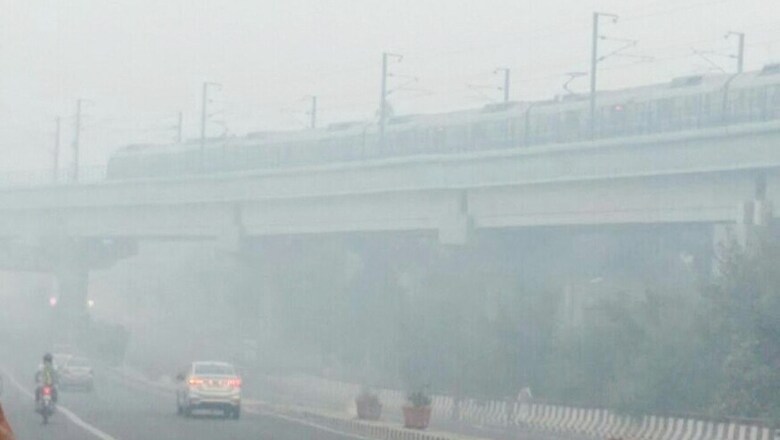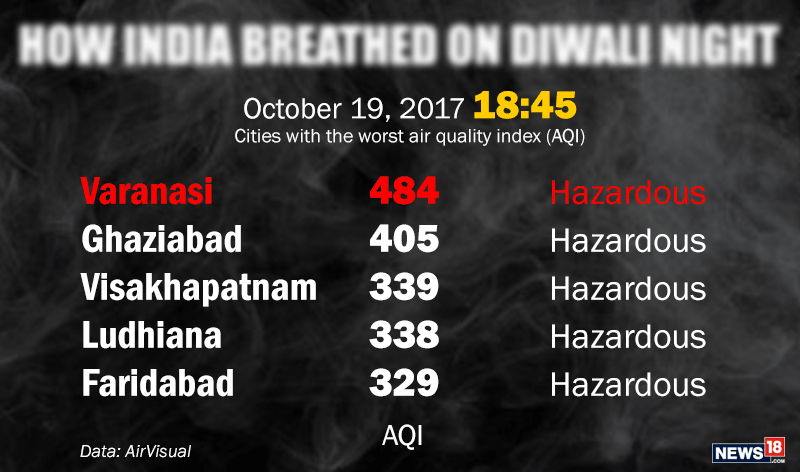
views
New Delhi: Delhiites woke up to smoke-filled air on Friday as all hopes of cracker-free festivities in Delhi and NCR were dashed despite the Supreme Court ban on sale of firecrackers.
The online indicators of the pollution monitoring stations in the city glowed red, indicating a 'very poor' air quality. Volume of ultra-fine particulates PM2.5 and PM10, which enter the respiratory system and manage to reach the bloodstream, had risen sharply after 7 pm as a quiet and promising evening gave way to noise and thick haze on Thursday night. The Delhi Pollution Control Committee's (DPCC) RK Puram monitoring station recorded PM2.5 and PM10 at 878 and 1,179 micrograms per cubic metre at around 11 pm.
Data, however, shows that despite the high pollution, this Diwali was far better than last year. The 24-hour-average of the previous Diwali's Air Quality Index (AQI) was 445, putting Delhi in the 'severe' category. The AQI average of the day before last year’s Diwali was 431.
Though the 24-hour-average of this Diwali is not yet out, live AQI updates of the Central Pollution Control Board and the Delhi Pollution Control Committee put Delhi in the 'very poor' category, a step below 'severe'. Early morning levels in Delhi were at 320, which climbed to 345 by 10 am. RK Puram in south Delhi stood at 311, while Punjabi Bagh was in the 'poor' category at 243. Central locations such as Lodhi Road were at 383.
However, Anand Vihar, Delhi's worse polluted area, was in the severe category, with an AQI of 405. Shadipur followed with 403. The AQI average of the day before Diwali this year was 319.
The situation was similar, if not worse, in the neighbouring regions of Delhi such as Gurugram, Noida and Ghaziabad, where crackers were burst as usual, raising question marks on the efficacy of the administration in enforcing the apex court's ban.
However, the SAFAR has also predicted a relatively cleaner post-Diwali air due to favourable meteorological conditions, which are helping prevent the smoke-filled air from the agricultural belt of Haryana and Punjab from entering the national capital.
A 'very poor' air quality index (AQI) essentially means that people may suffer from respiratory illnesses on a prolonged exposure to such air. If the air quality dips further, the AQI will turn 'severe', which may trouble even those with sound health conditions and seriously affect those with ailments.
The Supreme Court-appointed Environment Pollution Prevention and Control Authority (EPCA) is empowered to enforce the Graded Response Action Plan (GRAP) to combat air pollution in Delhi-NCR.
Measures under the GRAP's 'very poor' and 'severe' categories, which include a ban on diesel generator sets, came into effect on October 17 and they will remain in force till March 15.

(With PTI inputs)



















Comments
0 comment